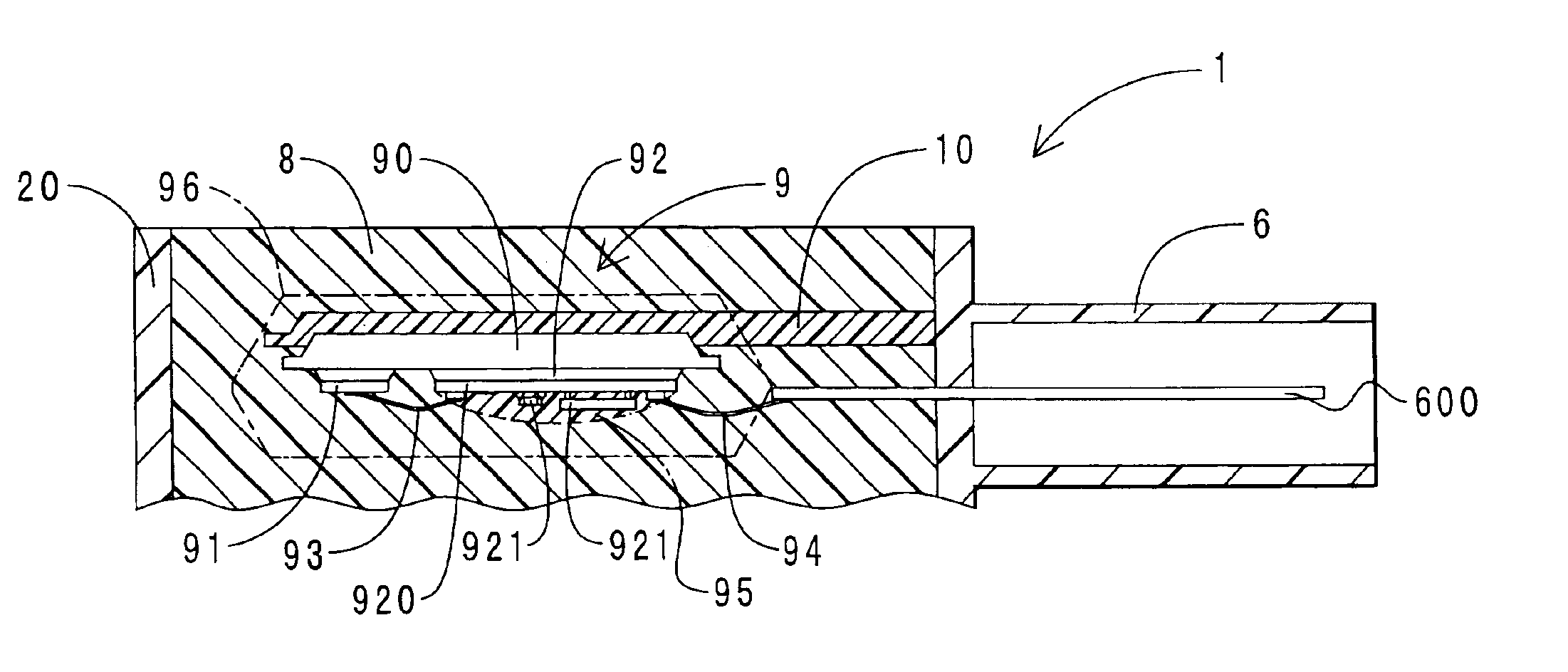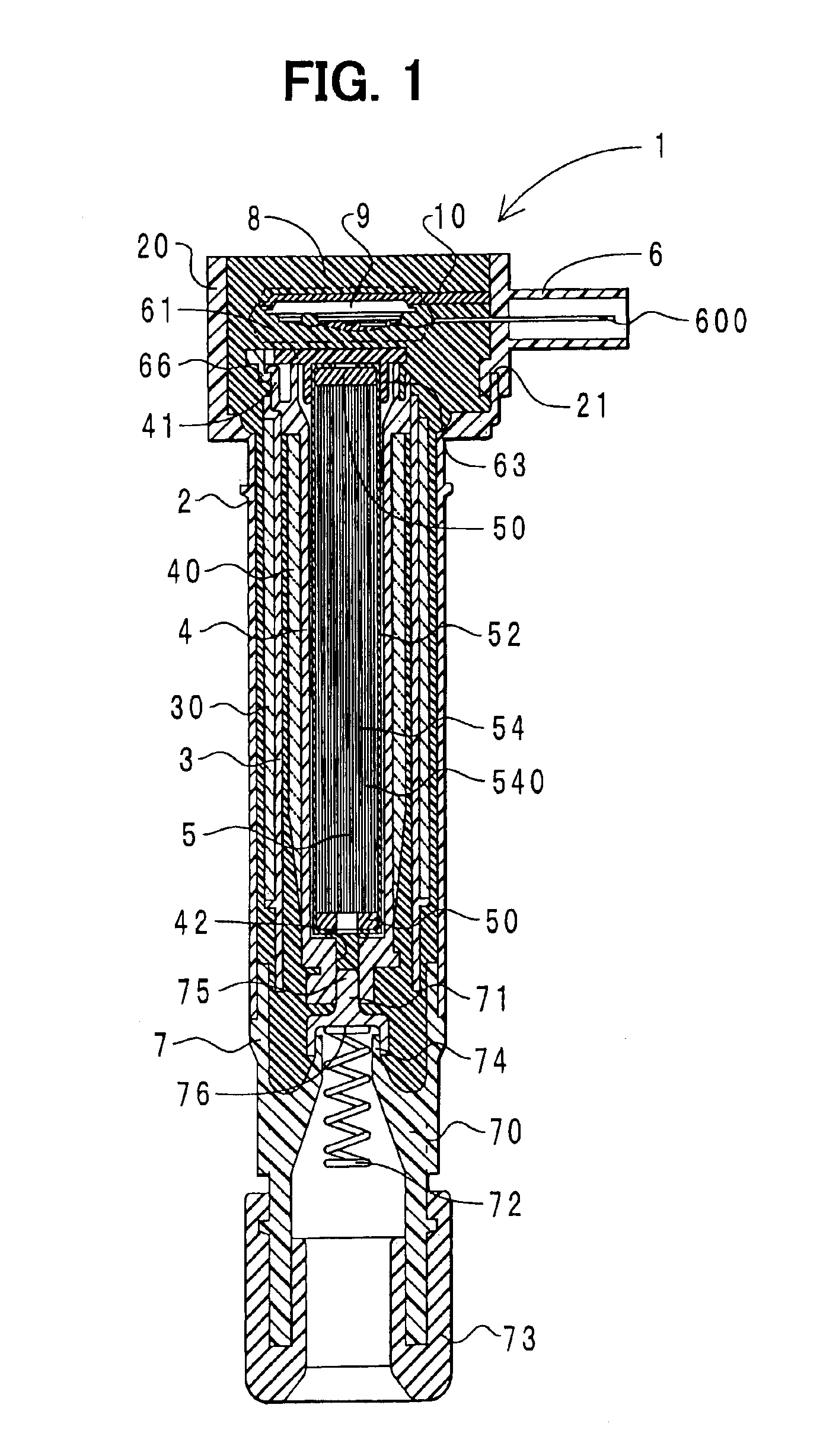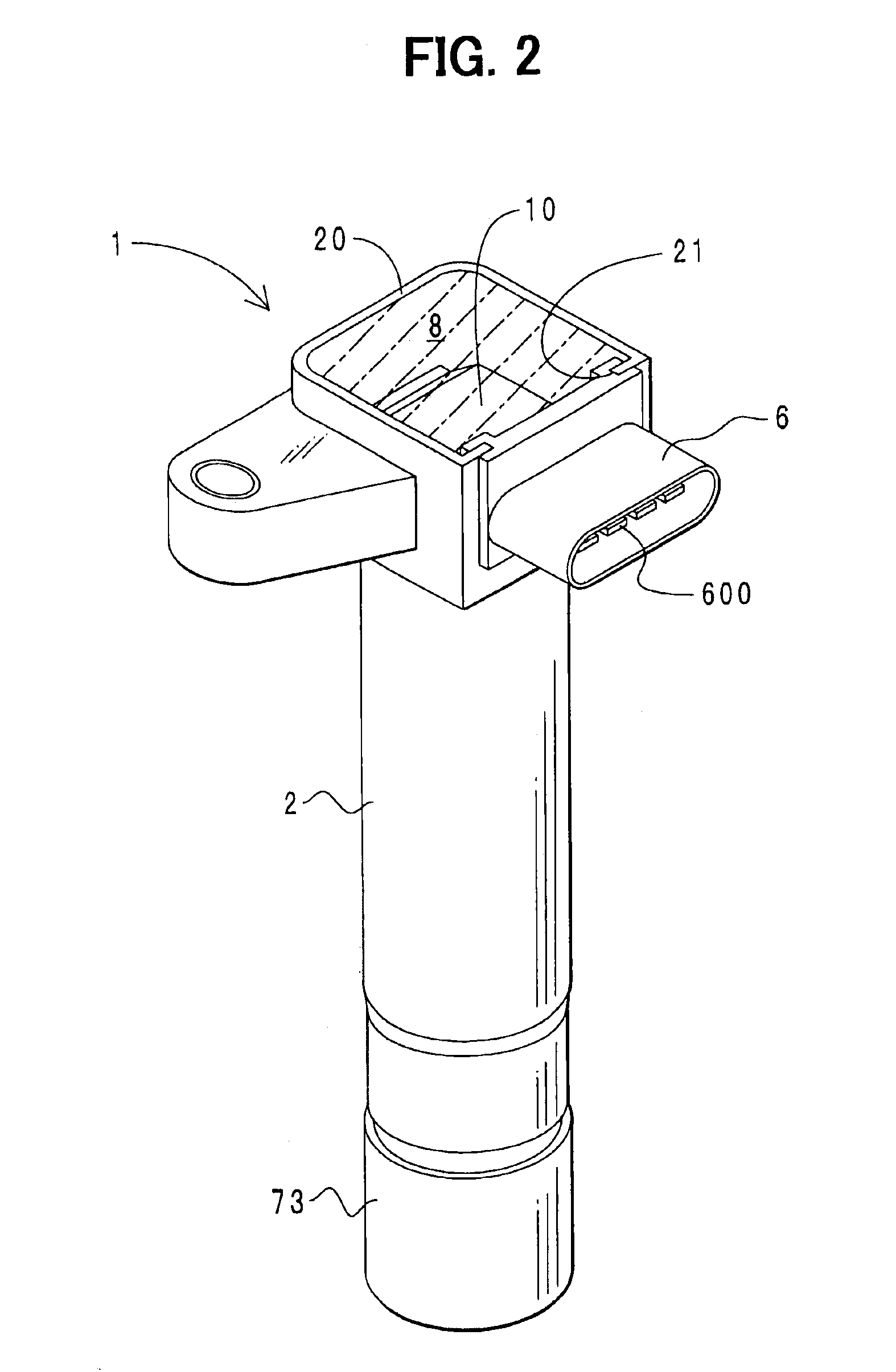Ignition coil
- Summary
- Abstract
- Description
- Claims
- Application Information
AI Technical Summary
Benefits of technology
Problems solved by technology
Method used
Image
Examples
first embodiment
(1) First Embodiment
The structure of the ignition coil according to this embodiment will first be described. FIG. 1 is an axial cross-sectional view showing the ignition coil according to this embodiment. FIG. 2 is an external view showing the ignition coil according to this embodiment. FIG. 2 is a view showing components through an epoxy resin. An ignition coil 1 of a stick type is accommodated in a plughole (not shown) formed in each cylinder on the upper portion of an engine block. As will be described later, the ignition coil 1 is connected to an ignition plug (not shown) at a lower side in the figure.
The ignition coil 1 comprises a housing 2. The housing 2 is made of a resin and takes the shape of a cylinder with a shoulder that is increased in diameter at an upper end. The portion below the shoulder is cylindrically shaped. On the other hand, the portion above the shoulder is rectangular shaped. Additionally, there is formed a wide opening 20 on the upper end portion of the ho...
second embodiment
(2) Second Embodiment
This embodiment differs from the first embodiment in that the positioning means is secured to the housing, and as well the connector and the igniter are not handled in one piece. Accordingly, the description here will be made only with respect to the differences.
FIG. 6 is an enlarged cross-sectional view showing the vicinity of the igniter in the ignition coil according to this embodiment. The components corresponding to those of FIG. 3 are indicated with the same symbols. As shown, positioning means 12 is secured to the wide opening 20 of the housing. The upwardly-oriented concave portion 11 is formed on the upper surface of the positioning means 12. The heat sink 90 of the igniter 9 is press fit from above into the concave portion 11. That is, the igniter 9 and the positioning means 12 of this embodiment are placed upside down with respect to those of the first embodiment.
The ignition coil 1 of this embodiment is assembled in the following steps. First, the me...
third embodiment
(3) Third Embodiment
This embodiment differs from the first embodiment in that the present invention is embodied in an ignition coil other than one of the stick type. Accordingly, the description here will be made only on the differences.
FIG. 7 is an axial cross-sectional view showing the ignition coil of this embodiment. In FIGS. 1 and 3, the same components are indicated with the same symbols. The ignition coil 1 comprises the housing 2 made of a resin. There are cores 55, a primary spool (not shown), a primary coil portion (not shown), the secondary spool 4, the secondary coil portion 40, the joint member 10, the high-voltage terminal 71, and a partition plate 22, each of which are accommodated inside the housing 2.
The core 55 takes the shape of an oval in cross section with the “C”-shaped cores being assembled together. The primary spool is made of a resin and is prismatic in shape. The primary spool is placed on the outer circumference side of the core 55. The primary coil porti...
PUM
 Login to View More
Login to View More Abstract
Description
Claims
Application Information
 Login to View More
Login to View More - Generate Ideas
- Intellectual Property
- Life Sciences
- Materials
- Tech Scout
- Unparalleled Data Quality
- Higher Quality Content
- 60% Fewer Hallucinations
Browse by: Latest US Patents, China's latest patents, Technical Efficacy Thesaurus, Application Domain, Technology Topic, Popular Technical Reports.
© 2025 PatSnap. All rights reserved.Legal|Privacy policy|Modern Slavery Act Transparency Statement|Sitemap|About US| Contact US: help@patsnap.com



